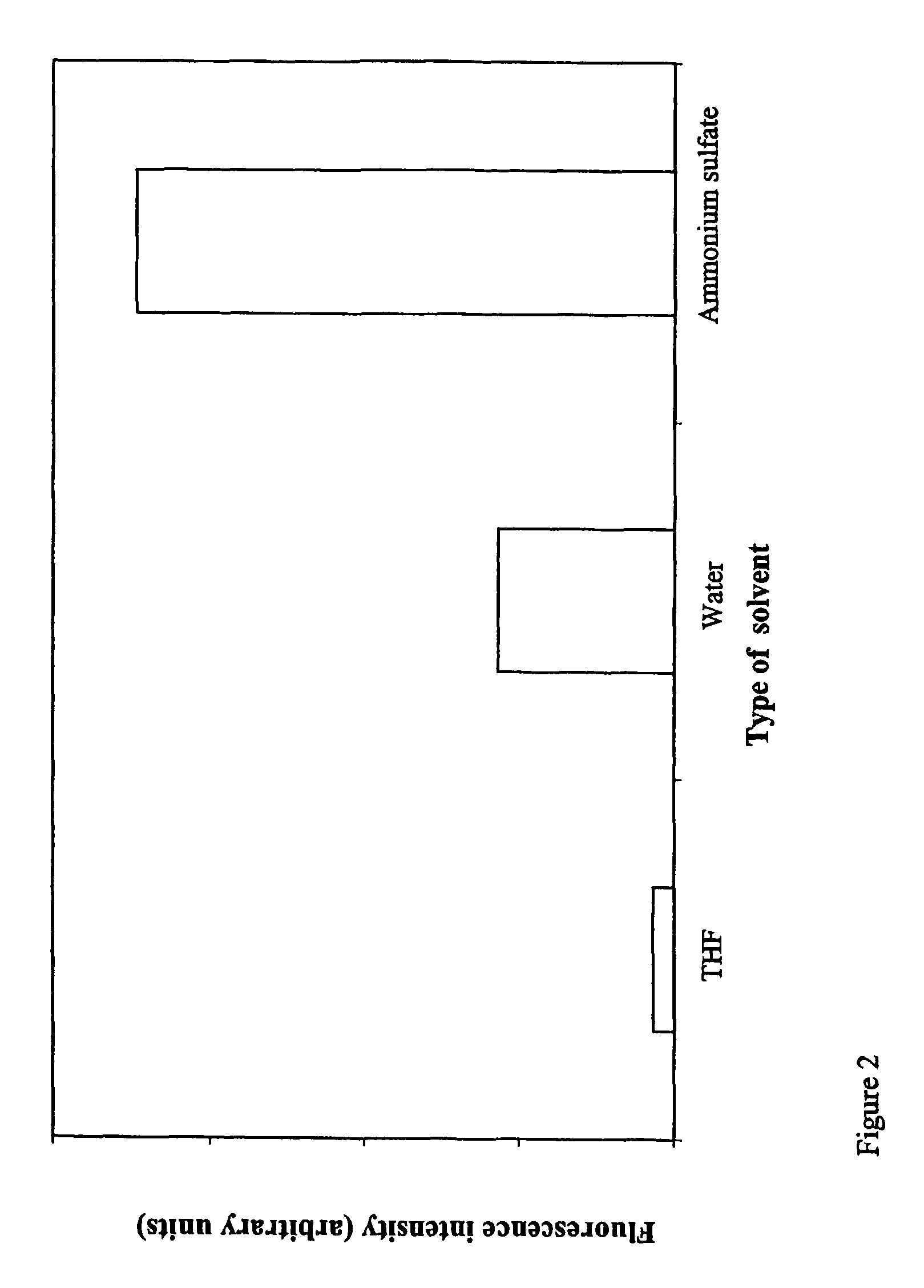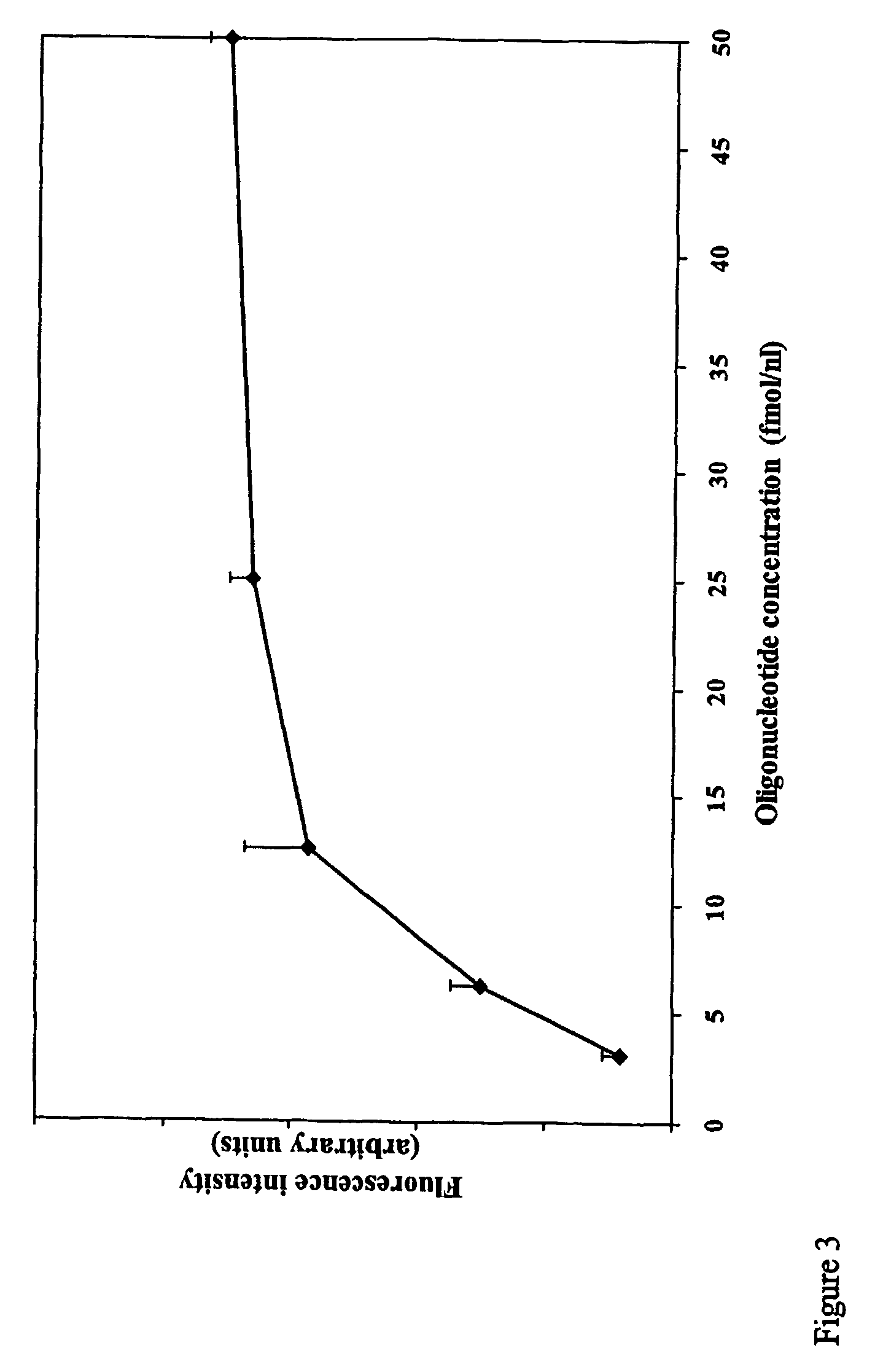Method for immobilizing biologic molecules on solid surfaces
a solid surface and biologic technology, applied in the direction of pretreated surfaces, carrier-bound/immobilised peptides, non-active ingredients of pharmaceuticals, etc., can solve the problems of cumbersome procedure, time-consuming procedure, and requiring careful control of operative parameters, so as to achieve simple and fast
- Summary
- Abstract
- Description
- Claims
- Application Information
AI Technical Summary
Benefits of technology
Problems solved by technology
Method used
Image
Examples
example 1
Synthesis of N-acryloyloxysuccinimide
[0030]To a solution of N-hydroxysuccinimide (NAS) (1.15 g, 10.0 mmol) and triethylamine (1.53 ml) in chloroform (15 ml), acryloyl chloride (0.99 g, 11.0 mmol), cooled at 0° C., was added dropwise, under mechanical stirring, over a period of 30-min. After an additional stirring of 20 min at 0° C., the solution was washed with ice-cold water (8 ml for 2 times), dried on Na2SO4 and then filtered. 2,5-Di-tert-butylhydroquinone (0.5 mg) (polymerization inhibitor) was added to the chloroform solution, which was concentrated to a volume of 3 ml, using a rotary evaporator and filtered. Ethyl acetate (3 ml) and n-hexane (2 ml) were slowly added while stirring to the chloroform solution, which was left at 0° C. for several hours. The precipitate, a colorless solid, was separated by filtration and washed with an ice-cold solution of ethyl acetate / n-hexane (4 / 1) and then washed only with n-hexane.
[0031]13C-NMR (DMSO), δ (ppm): 150 (carbonyl), 137 (CH2═), 122...
example 2
Synthesis of poly(N,N-dimethylacrylamide-co-N-acryloyloxysuccinimide)[DMA98-co-NAS2]
[0032]In a 25 ml, round-bottomed flask, equipped with condenser, magnetic stirring and nitrogen connection, N,N-dimethylacrylamide (600 mg, 6.15 mmol), N-acryloylsuccinimide (20.7 mg, 0.12 mmol) were dissolved in 6 ml of dry tetrahydrofuran (THF). The solution was degassed by alternating a nitrogen purge with a vacuum connection, over a 30 min period. Two mg of α,α′-azoisobutyronitrile (AIBN) were added to the solution which was then warmed to 50° C., and left at this temperature under a slightly positive nitrogen pressure for 24 hours. After the polymerization was completed, the solution was evaporated using a rotary evaporator, the white solid was dissolved in chloroform and precipitated by adding petroleum benzin. The supernatant was discarded and the whole procedure repeated 2 times. The polymer was dried under vacuum for 24 h at room temperature and stored at 4° C.
[0033]13C-NMR (DMSO), δ (ppm): ...
example 3
Synthesis of [DMA90-co-NAS10]
[0034]The synthetic pathway is the same as reported above, with the only difference being the ratio of DMA (600 mg, 6.15 mmol) to NAS (103.4 mg, 0.62 mmol). 13C-NMR (DMSO), δ (ppm): 174.6 (backbone carbonyl), 166 (succinimide carbonyl) 40-30 (metylene carbons). The degree of succinimide insertion was determined from the ratio of the integrals of backbone and succinimide carbons and it was found to be 7%.
PUM
| Property | Measurement | Unit |
|---|---|---|
| volume | aaaaa | aaaaa |
| temperature | aaaaa | aaaaa |
| temperature | aaaaa | aaaaa |
Abstract
Description
Claims
Application Information
 Login to View More
Login to View More - R&D
- Intellectual Property
- Life Sciences
- Materials
- Tech Scout
- Unparalleled Data Quality
- Higher Quality Content
- 60% Fewer Hallucinations
Browse by: Latest US Patents, China's latest patents, Technical Efficacy Thesaurus, Application Domain, Technology Topic, Popular Technical Reports.
© 2025 PatSnap. All rights reserved.Legal|Privacy policy|Modern Slavery Act Transparency Statement|Sitemap|About US| Contact US: help@patsnap.com



